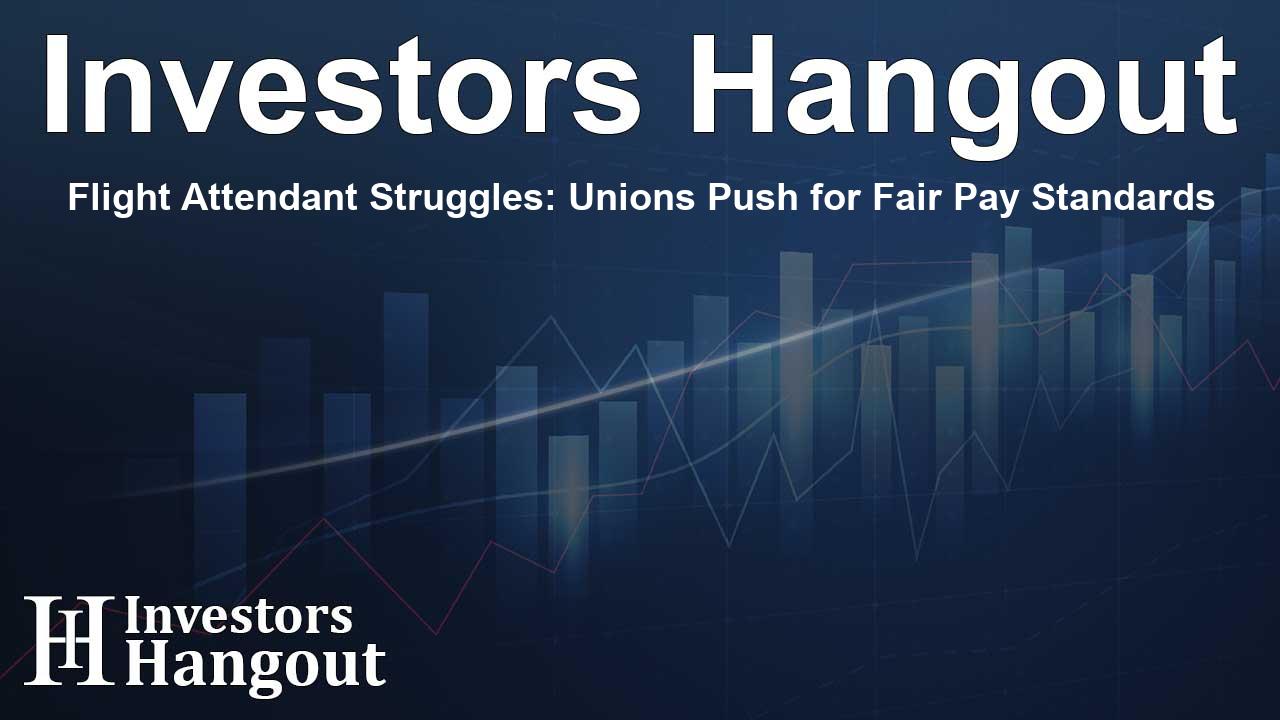Flight Attendant Struggles: Unions Push for Fair Pay Standards

Flight Crew Challenges in the Aviation Industry
Working as a flight attendant can be a rewarding experience, but the realities of the job often come with significant challenges. Rebecca Owens, a flight attendant for Alaska Airlines, exemplifies the struggles faced by many in the profession. Although she puts in 10-hour workdays, she only receives compensation for half that time, due to outdated airline policies that only pay cabin crew when the aircraft is in motion. For Owens and her peers, it's time for a change.
Union Negotiations and Pay Increases
In a recent vote, an overwhelming 68% of Alaska’s flight attendants rejected a contract proposal that would have provided a 32% pay increase over three years. This contract was particularly notable because it was intended to initiate payment for flight attendants as soon as passengers begin boarding flights, rather than waiting until the aircraft has started to taxi. This shift could significantly affect the financial well-being of cabin crew.
Industry Standards and Impact on Contracts
When it comes to labor negotiations, Alaska's developments are grabbing attention across the airline sector. Other airlines, such as United Airlines and American Airlines (NASDAQ: AAL), are in similar situations, where their cabin crews are either negotiating new contracts or have recently concluded discussions. For instance, United has not granted raises to its flight attendants since 2020, while Alaska Airlines remains committed to paying competitive wages. The airline industry has seen extensive discussions around fair compensation, especially as airlines are posting healthy profits.
Flight Attendants Demand Better Treatment
Flight attendants have noted a surge in confidence during negotiations, driven by favorable airline earnings alongside substantial pay deals for pilots and workers in related sectors. The frustration surrounding inadequate compensation is representative of broader worker sentiments, where many feel their pay has not kept pace with inflation and increased workloads. Cabin crews remember past sacrifices made during economic downturns and the COVID pandemic; now, they are demanding a more equitable share of airline revenues.
Legal and Economic Implications
There are ramifications for airlines if negotiations stall. Both Alaska and United cabin crews have empowered their unions to potentially strike if agreements are not reached. Alaska Airlines recently reiterated its commitment to providing market-competitive wages and benefits. However, as Sara Nelson, international president of the Association of Flight Attendants-CWA (AFA), asserts, flight attendants are becoming increasingly frustrated. Many cannot afford essential living costs, which has only exacerbated stress levels among crew members.
Living Conditions and Economic Challenges
The situation is particularly dire for newer recruits at airlines like United, who often struggle to secure affordable housing. Some have had to resort to living in their cars due to the exorbitant costs of living in major cities, despite working full hours. With starting salaries around $28.88 at United and $27.69 at Alaska, a pressing concern remains: flight attendants want to be compensated for all hours worked, not just the time the aircraft is in the air.
Conclusion: A Call for Change in the Industry
The current climate suggests airlines must rethink their compensation structures. If they continue to disregard the grievances of their flight crews, they may face more severe backlash from their employees. As Owens aptly states, "People can only take so much." The persistent burnout among flight attendants reflects a critical need for dialogue around fair pay and working conditions in the airline industry.
Frequently Asked Questions
What issues are flight attendants facing?
Flight attendants are struggling with pay disparities, as they are often only compensated for flight hours rather than all hours worked.
What are unions demanding for flight attendants?
Unions are advocating for legislation to pay flight attendants from the moment passengers begin boarding and for higher overall wages reflective of their work hours.
Why did Alaska Airlines flight attendants reject the contract?
They rejected the contract because it did not sufficiently address their demands for increased pay and fair compensation practices.
How have pay negotiations changed recently in the industry?
Recently, flight attendants have approached negotiations with increased confidence due to the rising profits of airlines and successful contracts for pilots.
What actions can flight attendants take if negotiations fail?
If negotiations are unsuccessful, cabin crews from airlines like Alaska and United have given their unions the authority to call strikes.
About Investors Hangout
Investors Hangout is a leading online stock forum for financial discussion and learning, offering a wide range of free tools and resources. It draws in traders of all levels, who exchange market knowledge, investigate trading tactics, and keep an eye on industry developments in real time. Featuring financial articles, stock message boards, quotes, charts, company profiles, and live news updates. Through cooperative learning and a wealth of informational resources, it helps users from novices creating their first portfolios to experts honing their techniques. Join Investors Hangout today: https://investorshangout.com/
Disclaimer: The content of this article is solely for general informational purposes only; it does not represent legal, financial, or investment advice. Investors Hangout does not offer financial advice; the author is not a licensed financial advisor. Consult a qualified advisor before making any financial or investment decisions based on this article. The author's interpretation of publicly available data shapes the opinions presented here; as a result, they should not be taken as advice to purchase, sell, or hold any securities mentioned or any other investments. The author does not guarantee the accuracy, completeness, or timeliness of any material, providing it "as is." Information and market conditions may change; past performance is not indicative of future outcomes. If any of the material offered here is inaccurate, please contact us for corrections.